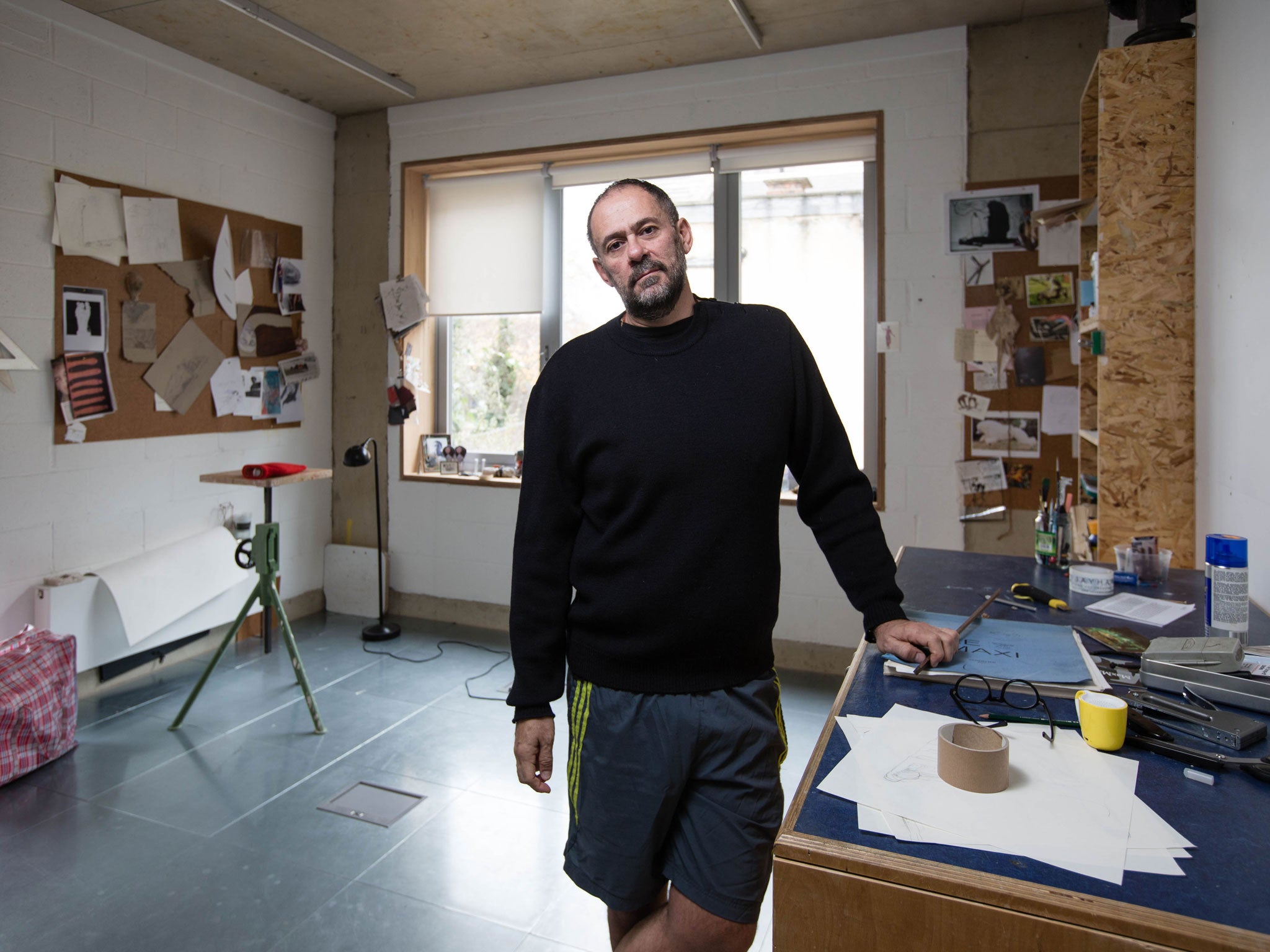Enrico David, artist: 'My shows are like sand dunes in the desert. You will see an oasis ahead - or more sand'
Karen Wright meets the artist in his studio in Hackney, east London

Enrico David greets me at the door to his recently built living and work space in Hackney, east London. Stylish and affable, despite suffering from a bad back, he ushers me through his studio – a large, bright room – to his elegant living area beyond. He has recently returned from installing a large show in the Hepworth gallery in Wakefield, hence the emptyish studio.
David lived in Berlin but returned to London in 2012 to live closer to his partner. He had heard that this building was under construction and "the space brought me back here". He was born in Ancona, Italy, in 1966 and left his homeland "to see what I was all about". He studied in London at Central St Martins School of Art and Design, was nominated for the Turner Prize in 2009 and exhibited in the US and Europe. Nevertheless, he says he finds the art scene "quite toxic".
I ask if the recent horrific events in Paris make the role of an artist more or less important? "We live in very unstable times, and we have to make things that reflect the times we live in. How could your work not be an expression of its time?" he asks.
David's unique combinations of paintings, cut-out sculptures and tapestries set up scenarios that, when knitted together by installation, encourage the viewer to walk around and engage with the works. The installations are not narratives, he is quick to say, but a totality in which the viewer should become immersed. In his words, they are "objects placed in a landscape so you are walking around as if you are experiencing a universe". Does he use exhibitions as deadlines to hasten his practice? "A show is like the stations along the journey of the train," he explains. "You get off and stretch your legs. The shows are sand dunes in the desert: you will see an oasis ahead, or more sand in front of you."
He has recently rented extra space for fabrication in a nearby studio complex because he is experimenting with fibreglass that is too toxic for a home environment. "Ventilation is a great tool," he adds. "Storage, ventilation and transport are the three molecules that make you a sculptor."
He is also rethinking his life/work concept, saying: "I am beginning to feel curious about separating life and work, and not having to subject everyone who comes here to walking through my subconscious before they have a cup of tea. There are always blankets there, there is a constant game of hide and seek. Am I ready to show them this – is it ready to be seen?"
Enrico David continues at the Hepworth Wakefield until 24 January (hepworthwakefield.org/whatson/enrico-david)
Join our commenting forum
Join thought-provoking conversations, follow other Independent readers and see their replies
Comments